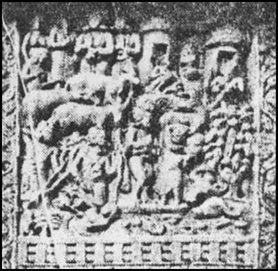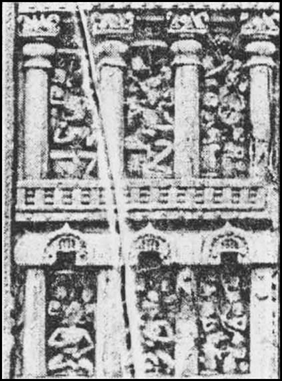Thinkers, Beliefs And Buildings
Describe the social and economic background of the rise of Jainism and Buddhism.
(a) The post-Vedic times society was clearly divided into four varnas: Brahmanas, Kshatriyas, Vaishyas and Shudras. Each varna was assigned well-defined functions.
(b) Varna was based on birth and only the two higher varnas like the Brahmanas and the Kshatriyas were given some privileges.
(c) The Brahmanas were the teachers and priests, who claimed the highest status in the society. The Kshatriyas who fought, governed and lived on the taxes collected from the peasants ranked second in the society. The Vaishyas were engaged in agriculture, trade etc. The Shudras were meant for serving the three higher in varnas and they were barred from taking to Vedic studies.
(d) They appear as domestic slaves, agricultural slaves, etc. They were called cruel, greedily and thieving in habits and some of them were treated as untouchables.
(e) The higher the varna the more privileges and purer, the lower the varna of an offender, the more severe was the punishment prescribed for him.
(f) So the varna-divided society seems to have generated tensions.
Economic background of the rise of new religions:
(a) The real cause of the rise of these new religions lay in the introduction of a new agricultural economic north-eastern India.
(b) In these areas of iron, tools made possible clearance culture and large settlements. The economy based on the iron required the use of cattle. Without animal husbandry, agriculture could not flourish.
(c) The Vedic practice of killing cattle indiscriminately in sacrifices stood in the way of the progress of new agriculture.
(d) The cattle wealth slowly decreased because the cows and bullocks were killed in numberless in the Vedic sacrifices. But if the new agrarian economy had to be stable this killing had to be stopped.
(e) The use of coins facilitated trade and commerce in the fifth century B.C., which added to the importance of the Vaishyas who ranked third in the society.
Sponsor Area
Some More Questions From Thinkers, Beliefs And Buildings Chapter
Describe how in the case of Vaishnavism, cults developed around the various avatars of the deity.
“Buddhism grew rapidly both during the life time of the Buddha and also after his death.” Justify the statement.
Explain the variety of sources used by the historians to reconstruct histories of religious traditions.
Were the ideas of the Upanishadic thinkers different from those of the fatalists and materialists? Give reasons for your answer.
Summarise the central teachings of Jainism.
Discuss the role of the begums of Bhopal in preserving the stupa at Sanchi.
Or
“The Begums of Bhopal played a significant role in preserving the remains of stupa at Sanchi.” Support this statement with suitable evidence.
Read this short inscription and answer the questions that follow:
In the year 33 of the maharaja Huvishka (a Kushana ruler), in the first month of the hot season on the eighth day, a Bodhisatta was set up at Madhuvanaka by the bhikkhuni Dhanavati, the sister’s daughter of the bhikkhuni Buddhamita, who knows the Tipitaka, the female pupil of the bhikkhu Bala, who knows the Tipitaka, together with her father and mother.
A. How did Dhanavati date her inscription?
B. Why do you think she installed an image of the Bodhisatta?
C. Who were the relatives she mentioned?
D. What Buddhist text did she know?
E From whom did she learn this text?
Why do you think women and men joined the Sangha?
To what extent does knowledge of Buddhist literature help in understanding the sculpture at Sanchi?
Figures I and II. are two scenes from Sanchi. Describe what you see in each of them, focusing on the architecture, plants and animals, and the activities. Identify which one shows a rural scene and which an urban scene, giving reasons for your answer.
Fig.: I

Fig. : II
Mock Test Series
Sponsor Area
NCERT Book Store
NCERT Sample Papers
Sponsor Area